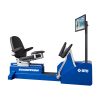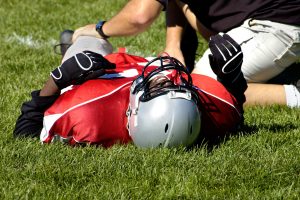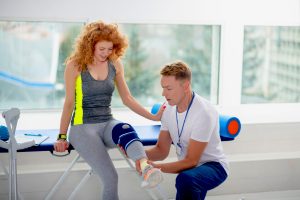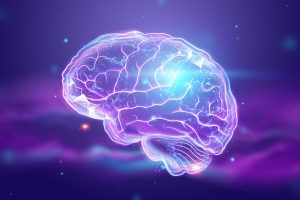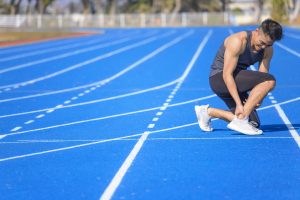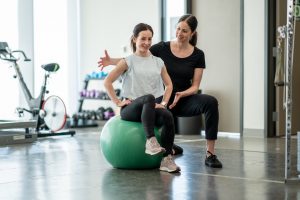
Neuromuscular Reeducation in Sports: Injury Recovery and Power Training
Treatment GuidelinesHere's why you should integrate neuromuscular reeducation in sports physical therapy programs. NMR helps your athletes recover from and prevent injuries while also training neuromuscular control. Keep reading for the whys and hows of neuromuscular reeducation in sports.
Neuromuscular reeducation (NMR) plays an important role in most rehabilitation programs, and it is especially important in sports. At the most basic level, athleticism can be boiled down to the synergy between the muscular and nervous systems. A great athlete quickly integrates all of the sensory information encountered during the sport and responds by activating the necessary muscles to accomplish the task at hand.
For this reason, athletes (both those recovering from injury and those who are healthy) can benefit significantly from neuromuscular reeducation. In this post, I’ll discuss neuromuscular reeducation in sports so that you can better assist your athletes in returning to play and reaching their maximum athletic potential.
Neuromuscular Reeducation’s Role in Sports Physical Therapy
In my opinion, the term “neuromuscular reeducation” is a bit of a misnomer. While many patients will RE-learn certain movements, others may have never learned said patterns before.
Put simply, neuromuscular reeducation involves guiding patients through simple and complex motions that train the central nervous system how to perform a task. Examples of neuromuscular reeducation in sports physical therapy include various PNF techniques, isometrics, and dynamic balance exercises, to name a few.
Early on, these treatments can help develop basic movement patterns. In the later stages of rehab, the clinician should attempt to incorporate these movements into the unique motions required in the athlete’s sport.
How To Integrate Neuromuscular Reeducation in Sports Injury Early Rehab
Especially when an athlete is recovering from surgery, simple isometric exercises can help to “wake up” injured and atrophied muscles.1 Often, a clinician may combine isometrics with neuromuscular electrical stimulation, or NMES. For example, NMES of the quadriceps is a common rehabilitation treatment for ACL injury.
Although NMES can be quite effective, most patients will quickly hit a ceiling with this treatment. At this point, they are ready to progress to isotonic active or active-assisted exercise. This is when clinicians need to be especially picky about form. Athletes who are relearning how to use their muscles must avoid compensatory strategies during exercise. This requires your close attention as the patient may “cheat” on the exercise without realizing it.
Another early neuromuscular reeducation technique for athletes is exercise in gravity minimized or gravity eliminated positions. By moving through basic motor patterns without having to push against the weight of the limb, the athlete can freely explore this motion that has been restricted for an extended period.
Lastly, the clinician may consider exercises above and below the joint of interest. For example, working on straight leg raises and ankle strengthening movements can be very beneficial early in the ACL rehab process. This helps the client relearn these movements in isolation, which translates to compound movements later on.
How To Advance NMR Exercises for Return to Sport
From the humble beginning isometrics, patients will eventually need to prepare for return to sport. To this end, the therapist should eventually incorporate advanced balance and functional exercises related to the athlete’s sport.
For instance, a tennis player who is approaching the end of their tennis rehab program may be prescribed dynamic movements while standing atop a BOSU ball. Additionally, she should perform rotational motions mimicking a tennis stroke. Breaking down all of the common movements used in tennis will help the athlete gain confidence and retrain the muscles which may have become weak and stiff during the recovery process.
Additionally, eccentric exercise should be a part of every athlete’s rehab program (of course, there are probably some exceptions to this rule). Because of this, recently, companies have developed new technology to help athletes perform eccentric exercise safely. One such piece of technology is the Eccentron from BTE.
Eccentron for Neuromuscular Reeducation in Sports
Rehab specialists have long understood that eccentric exercise is a major key for developing increased strength, hypertrophy, and neuromuscular control. For this reason, as soon as it is safe to do so, it’s prudent to incorporate eccentric exercise into your athlete’s program.
Eccentric exercise can be tricky for some athletes, especially those who are very explosive by nature. As Ron Courson, UGA’s Drector of Sports Medicine puts it, “…some athletes want to do everything as hard and as fast as they can. But [in rehab] that’s not always what you want.”
Harnessing Negative Resistance with BTE Eccentron
Slowing things down and focusing on the eccentric contraction goes a long way toward getting the athlete back on the field. The Eccentron facilitates neuromuscular reeducation for athletes from early post-injury to high-power performance training. The gaming interface keeps athletes engaged during exercise and helps develop force control via NMR.
Evidence for the Use of Eccentric Exercise in Sports
In a study from 2019, researchers found that eccentric exercise (on the Eccentron specifically) increased the activation of the gastrocnemius, hamstrings, quadriceps, and adductors as compared to traditional physical therapy exercises (heel raises, sidelying hip adduction, etc).2
Findings from a 2009 study demonstrated that a 12-week eccentric training program initiated at three weeks post-op from ACL reconstruction provided significant strengthening for the quads and glutes as compared to a standard PT program.3 Additionally, researchers found that the eccentric group was able to increase their hopping distance as compared to the control group.4
In 2019, Hody, et al. explored the risks and benefits associated with eccentric exercise.5 From evaluating the available evidence, they conclude that eccentric exercise, is an integral part of physical therapy for athletes, the elderly, and many other populations.
In summary, the available evidence seems to point to the fact that eccentric exercise can help your athletes recover from injury, prevent injury, increase strength, and improve force control. Eccentric exercise can be performed with traditional tools, but new technology like the Eccentron provides the added benefit of neuromuscular reeducation with the gaming interface and instant force feedback.
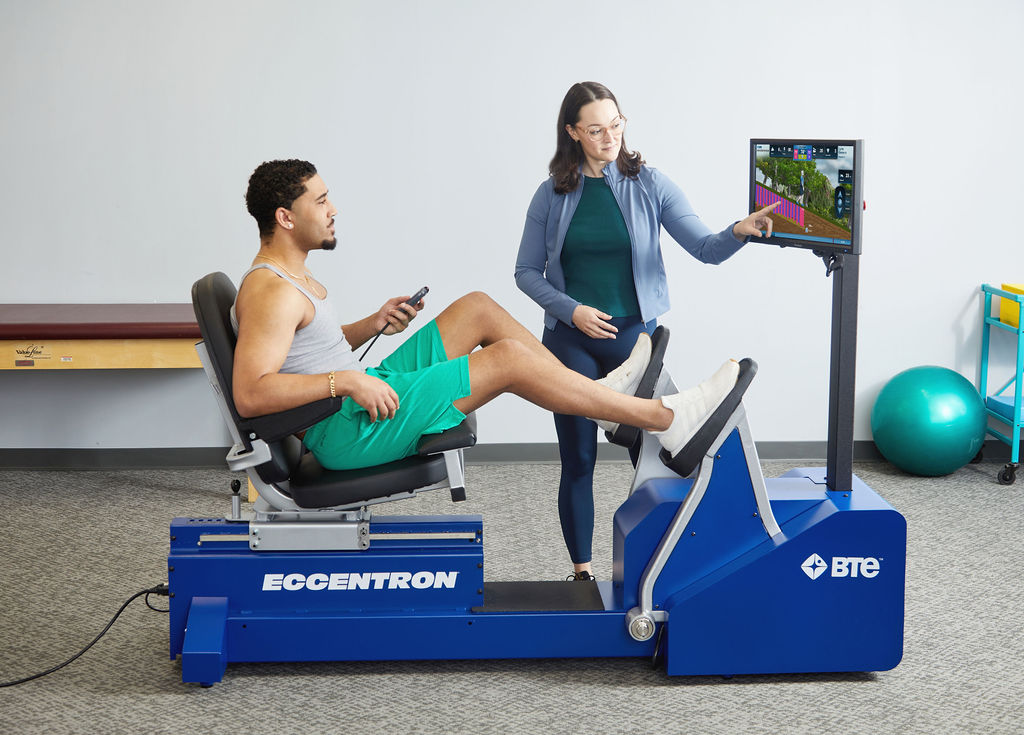
Conclusion
Neuromuscular reeducation is an important part of rehab for all patients, but it is especially crucial for athletes. Whether your athlete is returning to play after an injury, or learning a motor pattern for the first time, you can play a critical role in helping them avoid aberrant movements during their sport while optimizing their functional strength and stability.
The Eccentron from BTE engages athletes in neuromuscular reeducation and force control with gamified exercise. As part of a comprehensive treatment plan, the Eccentron can your clients get back in the game with renewed ability and confidence.
Bennett Richardson, PT, DPT, CSCS is a Physical Therapist and writer. He is the owner of Richardson PT LLC, a mobile, cash-based physical therapy service out of Pittsburgh, PA. Ben is passionate about many health-related topics including weight loss and athletic performance. To get in touch with Ben, visit www.richardsonpt.com

